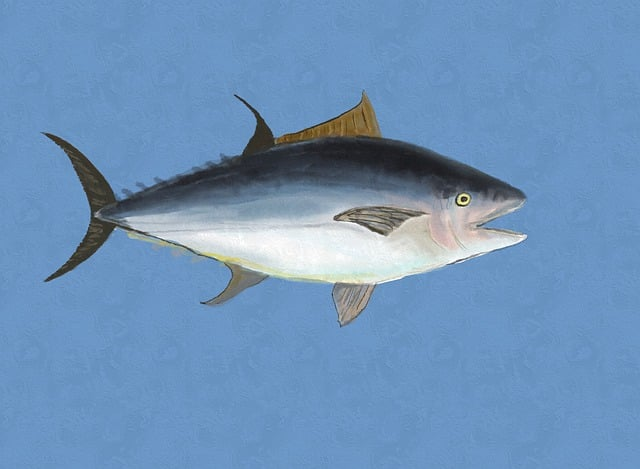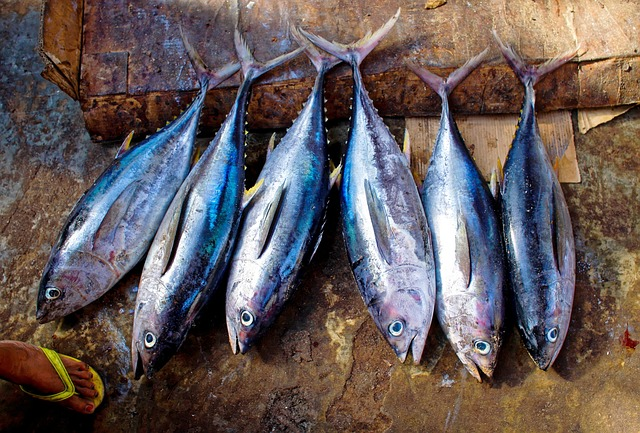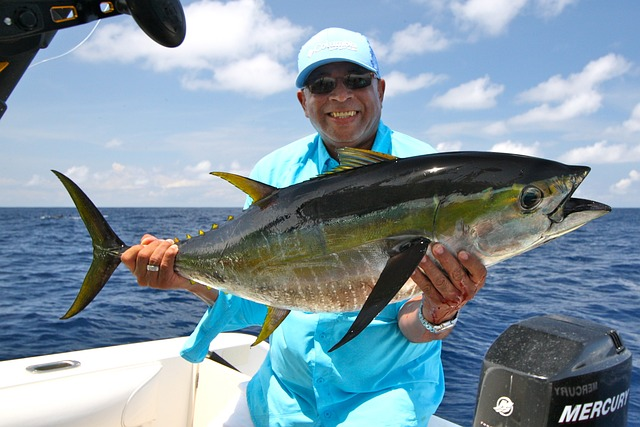Canyon fishing
Unfathomable depths, vast expanses of cobalt-blue waters, and the exhilarating chase of the mighty tuna define the thrilling adventure that is Northeast Canyon tuna fishing. This detailed guide explores the intricacies of the experience, the techniques, and the prime locations that make it an angler’s paradise.

The Allure of the Northeast Canyons: Nature’s Majestic Theater
The deep-sea canyons off the Northeast coast of the United States offer a marine biodiversity hotspot. Here, the currents from the deep ocean mingle with the coastal waters, creating the perfect habitat for a plethora of marine life, including the prized Bluefin and Yellowfin Tuna.
A Closer Look at the Tuna Species of the Northeast Canyons
Tuna are fast, powerful, and an absolute thrill to catch. Let’s delve deeper into the characteristics of the species that frequent the Northeast canyons.
Bluefin Tuna: The Titans of the Deep
Known for their speed, size, and endurance, Bluefin Tuna is a highly prized catch. Their muscular bodies and torpedo-like shape enable them to swim at high speeds, presenting an exciting challenge for anglers.

Yellowfin Tuna: The Acrobats of the Sea
Yellowfin Tuna are renowned for their acrobatic prowess and their lightning-fast speed. Catching a Yellowfin is a true test of an angler’s skill and determination.
Blue Marlin
Blue marlin are large, oceanic fish known for their elongated, spear-like bills and distinctive dorsal fins. Revered as one of the most formidable sport fishing targets, they’re renowned for their power, size, and the acrobatic display they put on when hooked.
Giant Bluefin Tuna
Giant Bluefin tuna are one of the largest and fastest fish in the ocean. Recognizable by their torpedo-shaped bodies and metallic blue tops, they’re highly prized for sport fishing and their high-quality, fatty meat that’s considered a sushi delicacy.
Northeast Canyon Tuna Fishing: A Seasonal Affair
Timing is crucial when planning a tuna fishing trip in the Northeast canyons. Summer and early fall are considered the best times, with warmer waters attracting tuna closer to the surface.
The Essential Gear for Tuna Fishing
The right gear can make the difference between a successful catch and a tale of ‘the one that got away.’ Heavy-duty tuna rods, high-capacity reels, and braided fishing lines capable of withstanding the power of a large tuna are essential.
Effective Baits and Lures for Tuna Fishing
Choosing the right bait and lures is critical. Live baits such as mackerel, herring, or squid can be highly effective. Artificial lures that mimic the appearance and movement of these prey are also a popular choice.
Casting Techniques and Fighting the Catch
Casting and successfully reeling in a tuna requires skill, strength, and patience. Accurate casting techniques and knowing how to fight a hooked tuna are vital parts of the process.
Safety and Regulations: Ensuring a Responsible Adventure
While the thrill of the chase is exhilarating, it’s crucial to adhere to safety measures and follow local fishing regulations. This ensures not only your safety but also the sustainability of the tuna population.
Navigating the Journey to the Northeast Canyons from Rhode Island
The Northeast Canyons are a spectacular geographical feature found off the Atlantic coast of the United States, extending from the edge of the continental shelf down to the deep ocean floor. They are renowned for their abundant biodiversity and are a preferred spot for offshore fishing, especially for the prized tuna.
Their proximity to several states along the northeastern seaboard makes these canyons easily accessible for fishing expeditions. For the residents of Rhode Island, the gateway to this oceanic paradise is especially close.
Rhode Island, the Ocean State, boasts numerous marinas and ports from which you can embark on your fishing journey. Popular departure points include Galilee, Newport, and Jamestown, each offering its unique charm and services.
The journey from Rhode Island to the prime fishing areas in the Northeast Canyons takes approximately 75 to 100 nautical miles, depending on the specific canyon you’re targeting. The distance means it’s not a quick jaunt out to the fishing grounds; rather, it’s an expedition.
The time it takes to reach these canyons from Rhode Island largely depends on the speed of your vessel. On average, a boat traveling at a speed of 20 knots would take about 4 to 5 hours to reach the fishing grounds in the Northeast Canyons.
Therefore, a trip to the Northeast Canyons from Rhode Island usually involves a full day or an overnight journey. However, the promise of an unrivaled fishing experience in the majestic setting of the canyons makes every moment of the journey worthwhile.
Why Canyon Fishing
The Gulf Stream, a powerful warm Atlantic Ocean current, significantly impacts canyon fishing. It fosters nutrient-rich warm water eddies, creating a vibrant ecosystem that attracts various game fish like tuna and marlin, thus making the canyons an ideal spot for sport fishing.
Canyon fishing is a thrilling and rewarding fishing experience predominantly practiced along the northeastern coast of the United States. Named after the underwater canyons found off the continental shelf, these hidden abysses in the Atlantic are fertile hunting grounds teeming with a diverse array of marine life. The nutrient-rich upwellings generated by ocean currents provide the perfect feeding grounds for fish species including tuna, marlin, swordfish, mahi-mahi, and shark. These deep-sea denizens make canyon fishing an attractive proposition for avid anglers.
The thrill of canyon fishing comes from the adventure and the challenge it presents. The canyons are often located more than 100 miles offshore, necessitating lengthy boat trips that can last from overnight to several days. With the help of modern GPS and sonar technologies, fishers locate the prime fishing spots, which are always unpredictable due to the migratory nature of the species.
Once the spot is identified, different fishing techniques are employed, ranging from trolling, jigging, to deep-dropping, depending on the target species and the conditions on the day. The deep depths of the canyons, which can plunge to thousands of feet, add another layer of challenge and excitement to the experience.
Canyon fishing in the Northeast not only offers the chance for huge catches but also opens the door to unparalleled wildlife encounters. Seabirds, whales, and dolphins are frequent sights, adding to the richness of the canyon fishing experience.
In terms of sustainability, it is crucial to adhere to the regulations set by the National Oceanic and Atmospheric Administration (NOAA) regarding species, sizes, seasons, and bag limits. This ensures the long-term viability of the sport and the health of the marine ecosystem.
Overall, canyon fishing in the Northeast offers an unparalleled angling experience that combines the thrill of the deep sea, the unpredictability of diverse marine life, and the challenge of sustainability, making it a highly sought-after adventure for fishing enthusiasts.
Bigeye Tuna
Bigeye tuna, scientifically known as Thunnus obesus, is a species of true tuna belonging to the mackerel family. Named for its large, distinctive eyes, this pelagic fish is native to the open waters of the Atlantic, Indian, and Pacific Oceans.
Bigeye tuna are robust, torpedo-shaped fish with a metallic blue color on top that transitions to silver-white on the belly. They can reach lengths of up to 250 cm and weights of over 400 pounds. Their diet mainly consists of other fish, crustaceans, and cephalopods.
Bigeye are remarkable for their tolerance to a wide range of water temperatures due to their unique circulatory system. They are known to dive deeper than other tuna species, sometimes to depths of 500 meters during the day, returning to the surface at night. This behavioral adaptation allows them to forage across a vast thermal habitat.
Bigeye tuna are prized by commercial and recreational fishermen for their fighting spirit and their high-quality, fatty meat, making them a prime choice for sashimi and sushi. However, this demand has led to overfishing in certain regions, prompting the International Union for Conservation of Nature (IUCN) to classify the species as “Vulnerable”. Therefore, sustainable fishing practices and adherence to regulations are imperative for the survival and health of bigeye tuna populations.
Conclusion: The Unmatched Thrill of Northeast Canyon Tuna Fishing
The allure of Northeast Canyon tuna fishing lies in the fight the fish provide, the beauty of the open ocean, and the satisfaction of landing one of the sea’s most formidable creatures. Whether you’re a seasoned angler or a novice, the adventure promises a truly unforgettable experience.
The advent of early June marks the onset of the much-anticipated canyon season, a period that transforms Cape Cod into a paradise for sport fishing enthusiasts. The warming waters off the northeastern coast of the United States become an arena for a grand spectacle, inviting two magnificent species, the giant bluefin tuna, and the elusive blue marlin.
The bluefin tuna, an imposing creature that can reach lengths up to 10 feet and weighs over 1,000 pounds, is a revered target for anglers. The blue marlin, with its distinctive dorsal fin and elongated bill, offers an equal measure of challenge and reward. The warm water eddies that swirl off the continental shelf create an abundance of nutrients, attracting a myriad of smaller fish and squid, the favorite baits of these predatory species.
As the Atlantic currents shift, they create these warm-water eddies, pockets of balmy water teeming with marine life. It is in these eddies that white marlin, another highly sought-after gamefish, makes its appearance. They are slightly smaller and more acrobatic than their blue counterparts, offering a different kind of angling challenge that requires precision and skill.
The fishing time in these waters requires careful planning. Predatory fish like marlins and tuna are most active during the early morning and late afternoon, turning these hours into prime fishing time. Expert anglers, armed with their sophisticated gear and squid baits, navigate their boats into the heart of the warm water eddies, where they cast their lines and wait for the thrill of the catch.
Sport fishing around Cape Cod during canyon season is not merely an activity, but an immersive experience that draws individuals from across the globe. The arrival of early June brings anticipation and excitement, as the warm waters promise encounters with the giant bluefin tuna, blue marlin, and white marlin – a testament to the rich biodiversity of these marine canyons. However, amidst the thrill and joy, the emphasis on sustainable fishing practices should remain paramount to ensure these majestic species continue to grace these waters for generations to come.

